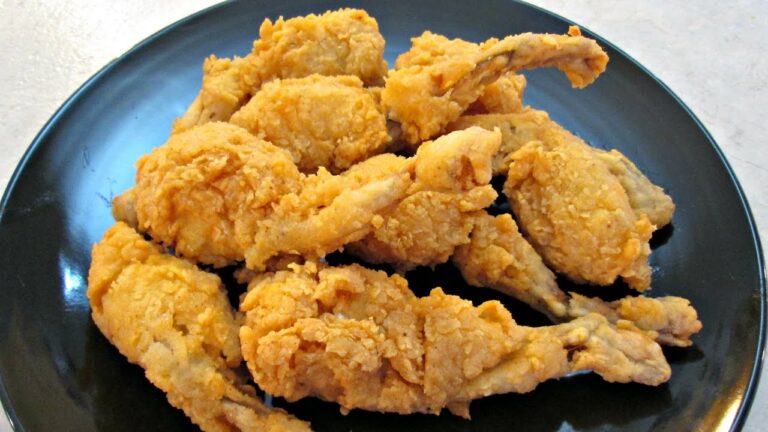The bullfrog, known scientifically as Rana catesbeiana, originated in Eastern North America but has spread far beyond. Their reach now extends through South America, China, and Europe.
These amphibians have a lifespan of up to nine years in the wild and live near freshwater sources like ponds, lakes, marshes, and streams. They prefer warm water and reproduce with extreme efficiency, laying up to 20,000 eggs at a time. Due to their aggressive appetite, bullfrogs pose a threat to native species, including birds, fish, rodents, and other amphibians.
Cooking bullfrogs offers a practical solution to reduce their population. Their legs provide lean, tender meat, and their flavor profile works with a variety of cooking styles. Several recipes highlight different culinary approaches to bullfrog legs. Each dish helps curb the bullfrog population and delivers a flavorful meal that reflects regional cuisine.
Traditional Bullfrog Hunting Methods
Hunters pursue bullfrogs at night using a method called gigging. A long pole with a multi-pronged spear allows the hunter to catch frogs after spotting their eyes reflecting in torchlight. Waders are not commonly used, so frog hunters typically wade into shallow water to increase maneuverability.
Many enthusiasts consider full-moon nights ideal for this activity. Success comes with patience and practice. Once caught, frog legs can be skinned, cleaned, and prepared for various dishes.
Fried Frog Legs: Classic French Style
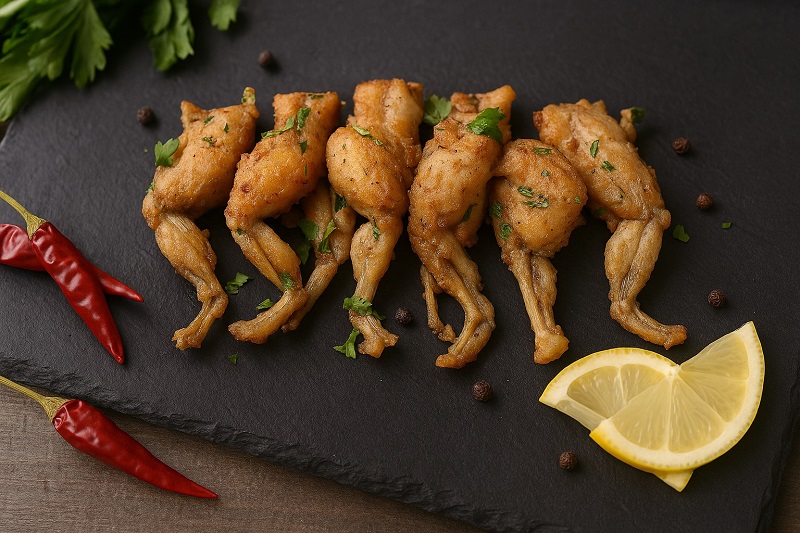
Chef Hank Shaw popularized a French method for cooking bullfrog legs. The dish, called cuisses de grenouille à la Provençale, uses garlic, parsley, white wine, and lemon to create a light Mediterranean flavor.
Ingredients:
- Bullfrog legs (cleaned)
- Flour for dredging
- Butter
- Garlic cloves (minced)
- Chopped parsley
- Lemon juice
- Dry white wine
- Salt and pepper
Steps:
- Dredge frog legs in seasoned flour.
- Melt butter in a skillet over medium heat.
- Add garlic and sauté briefly.
- Place frog legs in the pan and cook each side until golden brown.
- Add lemon juice and wine.
- Simmer briefly and sprinkle with parsley before serving.
This method delivers crisp legs with a mild, clean flavor. The lemon and wine balance the natural taste of the meat.
Teriyaki Frog Legs with Mushrooms
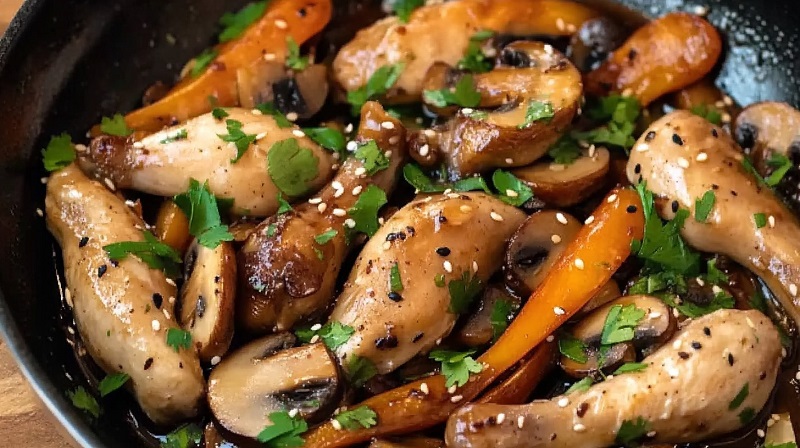
Another flavorful take on frog legs with an Asian twist. Teriyaki sauce, mushrooms, and hot sauce combine in a stir-fry style.
Ingredients:
- ¼ cup butter
- 2 cups chopped onions
- 1 cup chopped bell peppers (red or green)
- 1 cup minced fresh parsley
- 1 lb. sliced crimini mushrooms
- 2 Tbsp. minced garlic
- 1½ tsp. onion salt
- ½ tsp. ground ginger
- 1 tsp. hot sauce
- 2 cups boned frog legs
- ½ cup dry white wine
- ½ cup teriyaki sauce
Instructions:
- Melt butter in a wok over medium-high heat.
- Add onions, peppers, and parsley. Sauté until onions soften.
- Stir in mushrooms, garlic, onion salt, and ginger.
- Add hot sauce and frog legs. Cook until evenly coated.
- Pour in wine and teriyaki sauce. Lower heat and simmer for 10 minutes.
- Serve with stewed tomatoes and buttered grits.
The final dish carries both sweet and spicy flavors, complemented by the tender texture of mushrooms and lean meat.
Cajun-Fried Bullfrog Legs
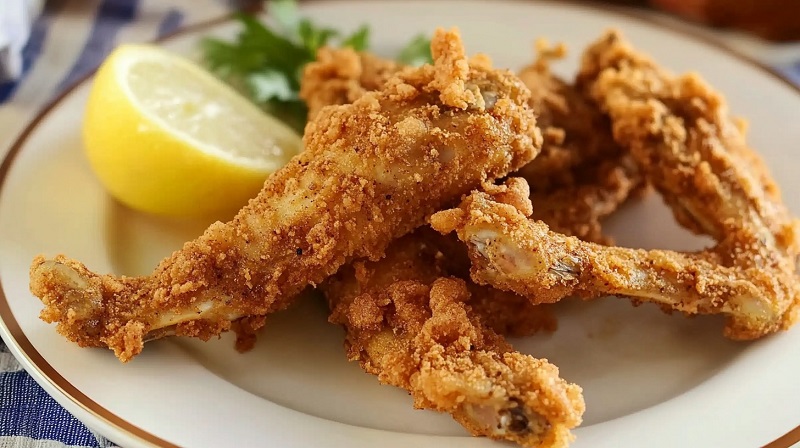
Jacques Gaspard designed this Southern-style recipe, combining a peppery batter with a crispy finish. The use of Cajun seasoning and cornmeal gives the dish regional authenticity.
Ingredients:
- 12 pairs of bullfrog legs
- 2 egg whites
- 1 Tbsp. Cajun seasoning
- 1 tsp. cayenne pepper
- 1 tsp. lemon pepper
- 1 tsp. salt
- 2 tsp. Tabasco sauce
- 1 tsp. baking powder
- 2 tsp. cornstarch
- 4 oz. beer
- 2 cups flour
- 1 cup yellow cornmeal
- 1 quart peanut oil
Steps:
- Mix egg whites, seasonings, Tabasco, baking powder, and beer.
- Add cornstarch dissolved in water to the mix and whisk.
- In a second bowl, combine flour and cornmeal.
- Dredge frog legs in the wet batter, then coat with the flour mix.
- Heat peanut oil to 365°F.
- Fry legs 3 to 4 minutes per side or until golden brown.
Avoid crowding the pan to preserve oil temperature. Serve hot with coleslaw, hush puppies, or remoulade sauce.
Nutritional Value of Bullfrog Legs
Bullfrog legs provide lean protein, making them a suitable alternative to fish or poultry. A 3.5-ounce portion contains:
- 73 calories
- 16 grams of protein
- Less than 1 gram of fat
- 0 grams of carbohydrates
This protein source fits into low-fat and low-carb diets. The mild flavor allows for flexible pairing with vegetables, grains, or stews.
Pairing Sides with Bullfrog Dishes
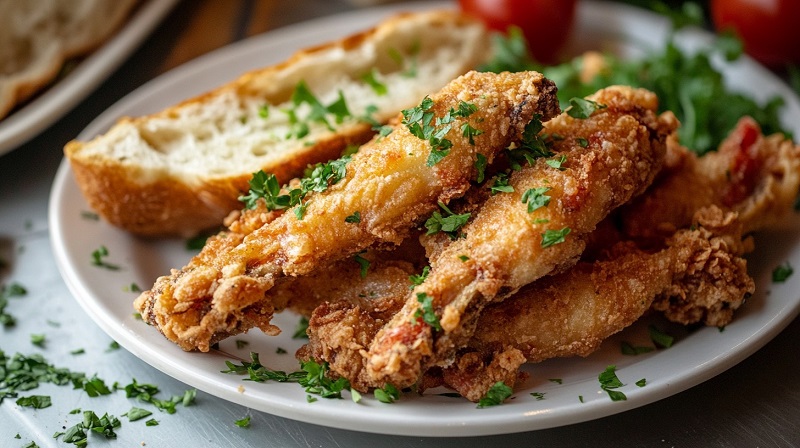
Each recipe pairs best with specific side items. Consider the following combinations:
- French Style: Crusty French bread, ratatouille, white asparagus
- Teriyaki Style: Steamed jasmine rice, bok choy, sesame cucumber salad
- Cajun Style: Dirty rice, baked okra, cornbread
These options balance flavor, texture, and cultural influence.
Ecological Benefits of Cooking Bullfrogs
Bullfrogs disrupt native ecosystems by feeding on local fauna. Their appetite often wipes out young fish and amphibians. By removing bullfrogs and turning them into meals, hunters and cooks contribute to local conservation.
Restaurants and food trucks have started offering frog leg dishes to reduce invasive populations. Wildlife agencies in states like Louisiana and Florida encourage harvesting efforts. Cooking recipes at home further helps reduce their numbers in vulnerable areas.
Where to Source Bullfrog Meat
Bullfrog legs can be harvested directly or bought frozen at specialty meat markets. For ethical sourcing, avoid any product that does not meet state hunting and harvesting laws. Some fish markets also carry wild-caught frog legs in vacuum packs. Always verify sourcing details before purchasing.
For hunters, nighttime excursions to warm freshwater spots increase success. Use flashlight reflection to locate eyes and a well-sharpened gig pole to spear targets.
Cooking Tips for First-Time Cooks
- Always clean and skin frog legs before cooking.
- Soak legs in salted water or buttermilk for one hour to improve tenderness.
- Do not overcook. Frog meat turns tough when exposed to high heat too long.
- Pan-frying and deep-frying work better than grilling for first-timers.
- Pair with sauces like lemon-butter, spicy aioli, or tomato-based blends.
Experiment with different coatings and spice mixes to match regional preferences.
Final Thoughts
Bullfrog recipes go beyond novelty. Their role in conservation adds value to every plate. Each preparation method offers a new way to experience the texture and flavor of this freshwater delicacy. From French pan-fry to Cajun deep-fry, every method combines culinary appeal with environmental action.
Gigging bullfrogs, prepping their meat, and perfecting the seasoning transforms invasive management into a rewarding food experience. For those who enjoy local food traditions, bullfrog legs provide a unique way to celebrate both regional cooking and responsible ecological practices.
Cooking bullfrogs helps balance ecosystems and introduces a lean protein into the diet. Choose a recipe, gather ingredients, and start reducing invasive species one meal at a time.

